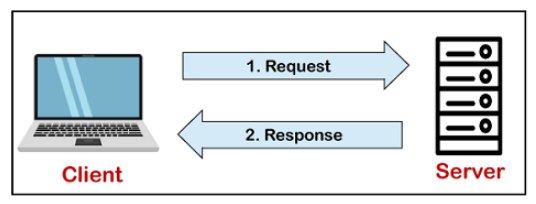MySQL is a client-server application, which works according to the Client-Server Architecture. Using this model, the end users can access the resources via a central computer known as a server using network services from a central computer called a client, which is a client computer. Clients make requests through a graphical user interface (GUI), and the server will then provide the desired output as soon as the instructions are matched by the server. There is no difference between the MySQL environment and the client-server environment when it comes to the process.

An important part of the MySQL database is the MySQL Server, which is the heart of the database. In this server, which is available as a separate program, it is responsible for handling all the instructions, statements, or commands that are sent to the database. MySQL database works in a similar manner to MySQL server in the following ways:
- As a result of MySQL’s creation, you are able to create a database that enables you to maintain many tables, store and manipulate the data, and define the relationship between those tables.
- The client makes requests by executing specific SQL expressions on the MySQL database through the GUI screen or the command line.
- At the end of the process, the server application will respond with the requested expressions and produce the desired result on behalf of the client application.
Clients can use any MySQL GUI when managing their data. However, it is important to ensure that your GUI should be lightweight and user-friendly in order to make your data management activities faster and simpler. A few of the most widely used MySQL GUIs include MySQL Workbench, SequelPro, DBVisualizer, and Navicat DB Admin Tool, which are some of the most widely used MySQL GUIs. Depending on your needs, some GUIs are commercial, while some are free with limited functionality, and some are only compatible with MacOS. As a result, you will be able to choose the GUI that suits your needs best.
Reasons for popularity
The following are some of the reasons why MySQL is becoming so popular:
- Using MySQL is free of charge, as it is an open-source database that you do not have to pay a single penny to use.
- Despite the fact that MySQL is a very powerful program, it is able to handle a large set of functionality that is usually found in the most expensive and powerful database packages.
- Because MySQL is an open-source database, it is very easy for programmers to customize it according to their specific environment because the open-source GPL license allows programmers to modify the SQL software to suit their own individual needs.
- Due to the fact that MySQL is one of the fastest databases, it can work well even with a large amount of data.
- It is well known that MySQL supports many operating systems as well as many languages, such as PHP, PERL, C, C++, JAVA, etc.
- A standard version of the well-known SQL data language is used by MySQL.
- As the most popular language for web development, PHP, MySQL is a very friendly database to work with.
- There is no limit to the number of rows in a MySQL table, it can accommodate up to 50 million rows. Tables have a default size limit of 4GB, but you can increase it (if your operating system can handle it) to a theoretical limit of 8 million terabytes (TB), if your operating system supports it.